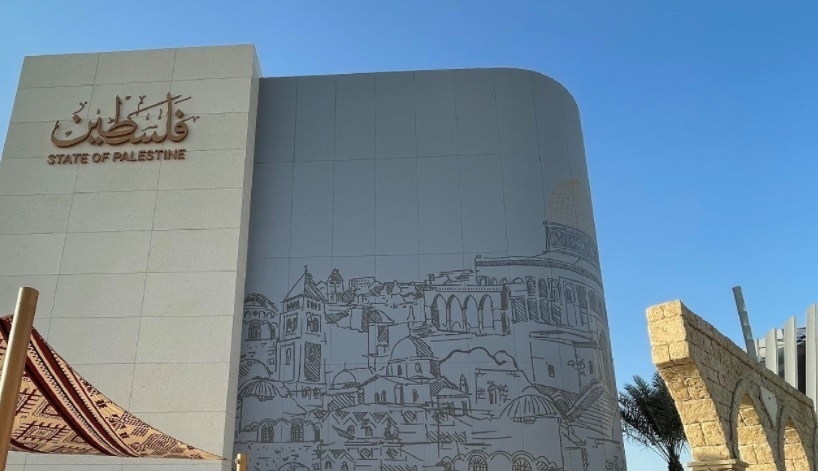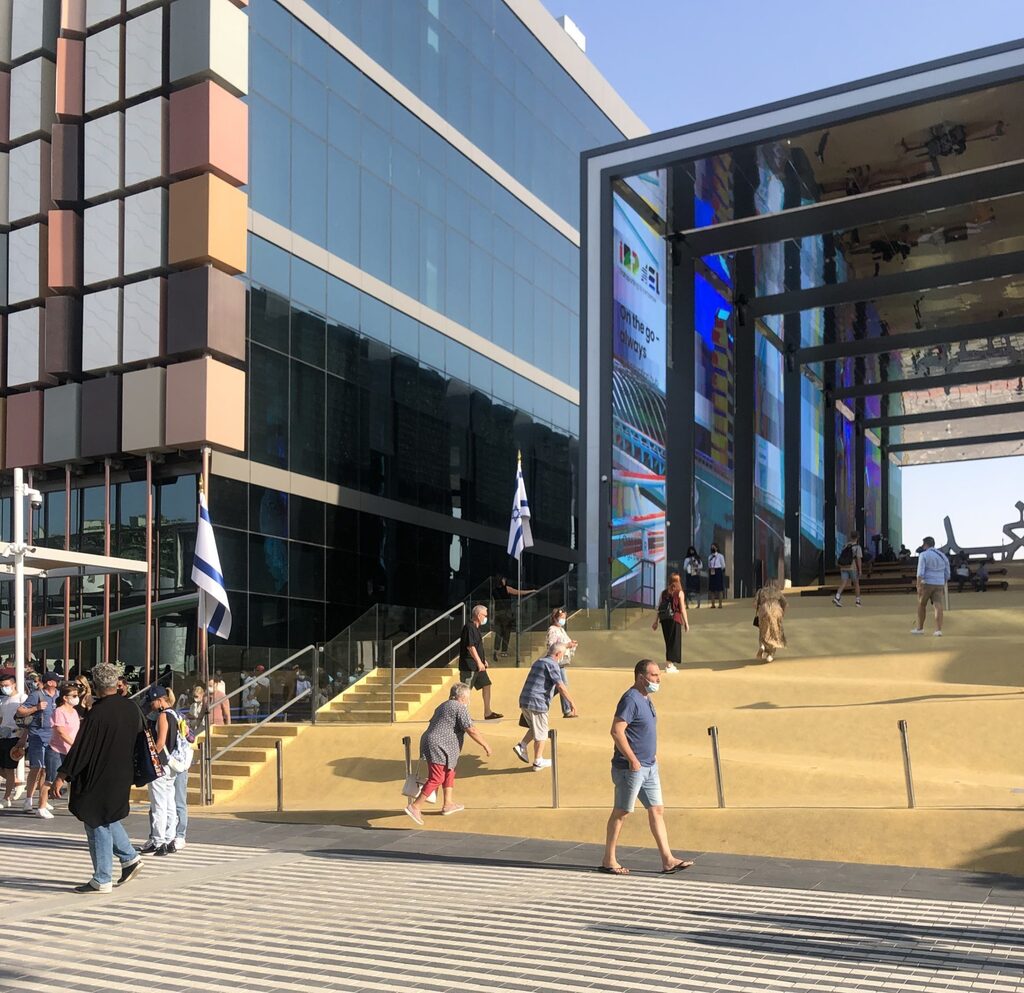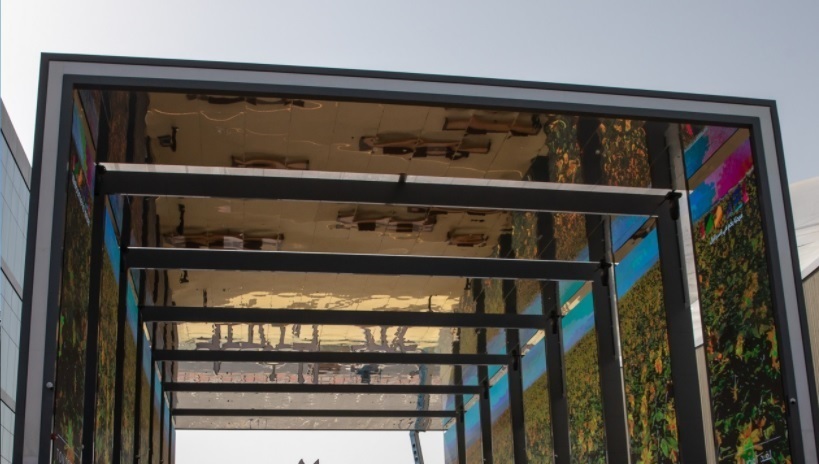Getting your Trinity Audio player ready...
The Israeli and Palestinian pavilions at Expo 2020, the World Expo being held in Dubai in the United Arab Emirates until March 31, 2022, both include videos featuring the Dome of the Rock, a symbol of Jerusalem – the holy city that both Israelis and Palestinians claim as their capital.
Lines of people wait outside the pavilion that represents the State of Palestine at Expo 2020. A wall inscribed with the message “Welcome to Palestine” in multiple languages greets them as they enter the building, designed by a team from the Palestinian Economy Ministry, to watch a video that introduces them to the country.
6 View gallery
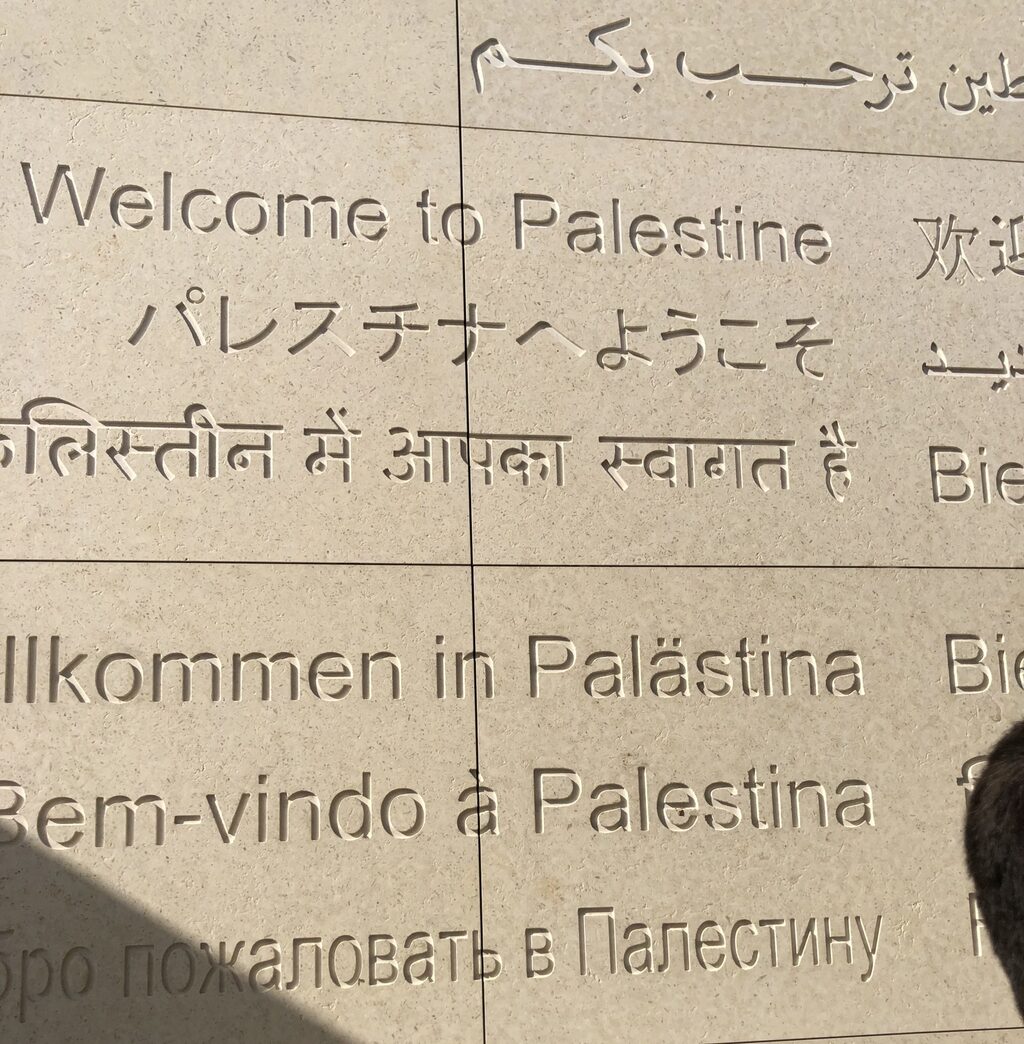

A wall inscribed with the message “Welcome to Palestine” in multiple languages greets visitors as they enter the Palestinian Pavilion, Expo 2020 in Dubai, UAE
(Photo: The Media Line)
“The pavilion is designed to help people experience Palestine through the five senses,” says a female tour guide from Palestine. “It is always busy. The only time we see it empty is at 10 am on working days; otherwise, there is a stream of visitors all the time,” she adds.
“This is not the first time Palestine has participated in an Expo,” she says. Expo 2015 in Milan, Italy also featured a Palestinian pavilion.
Unlike the Israeli pavilion that focuses on technology and looks to the future, the Palestinian pavilion focuses strictly on the unique cultural aspects of the country. The floors themselves are replicas of Old City streets.
“Diplomatic relations are important but we all also want awareness for Palestine. We want people to see the economic side of Palestine, what people do for a living. We want people to see a different side of Palestine,” Rassel Amr, the media officer for the pavilion, says during a phone interview. “The idea is to experience Palestine with your five senses; when you do that, you experience its past and its future,” she adds.
6 View gallery
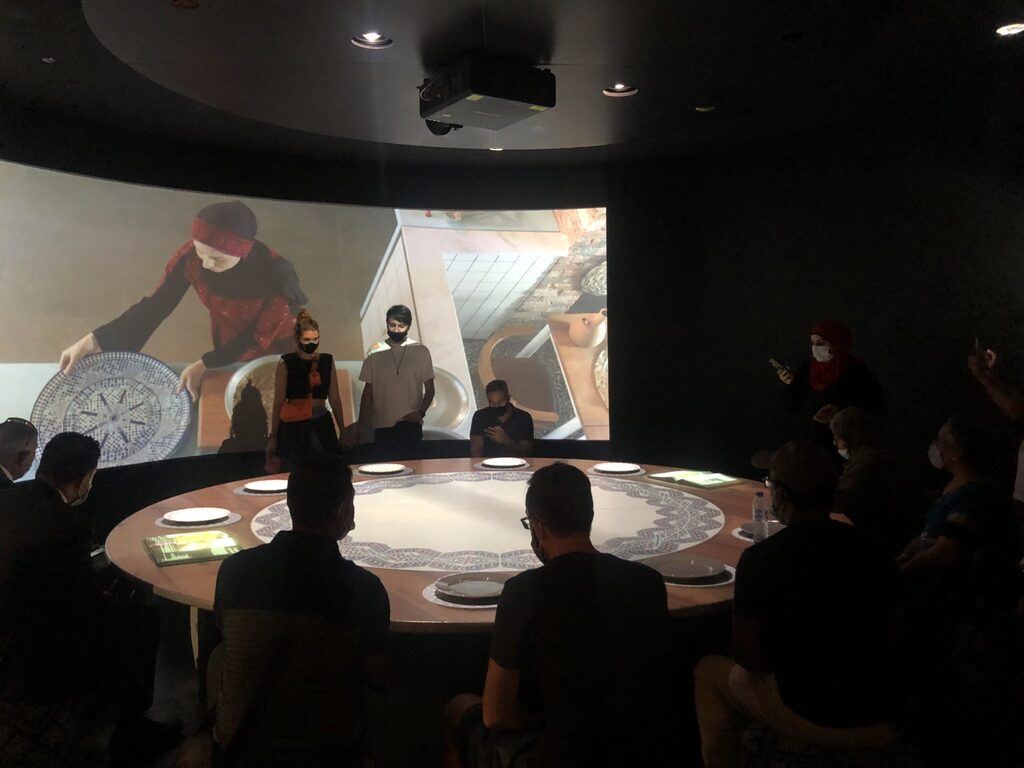

Visitors sit at a table illustrating a traditional Palestinian feast at the Palestinian Pavilion
(Photo: The Media Line)
The 1,250 square-meter building has two floors. The first is a waiting area, with an elevator to the second floor. The building’s exterior is designed with an art installation including the figure of a woman who represents the spirit of Palestine. It has drawn the attention of visitors from all around the world – Arabs, and non-Arabs, alike. However, there are no statistics on the number of people who have visited the pavilion.
After the video, visitors walk through hallways that display pictures of Palestine, enter a room where they can touch salts from the Dead Sea, walk into another room where they can smell the scents of Palestine, sit at a table that illustrates a traditional Palestinian feast, and finally, enter a room that shows Palestine through virtual reality.
“It is nice. It is good to preserve the culture. And considering the status quo, I am surprised by the quality of the pavilion,” says Hesna Boshnah, a Syrian woman who was visiting the pavilion. “It felt like home,” she says.
The Israeli pavilion reflects the expo’s motto, “Connecting Minds, Creating the Future.” It features a sign reading “Toward Tomorrow” in a combined Arabic and Hebrew script. The design of the building is reminiscent of a desert dune, though in a metallic color, to show commonality between Israel and the Gulf states.
The pavilion, spread over 1,550 square meters of floor space and 15 meters high, is built with wide screens that flash videos showcasing Israel’s advanced technologies rather than its culture.
It is mostly open space, with a few closed rooms, including a theater in which a 360-degree video is screened. The content of the pavilion clearly aims to showcase what Israel can do for the Arab world, particularly for the UAE, the host country, in a variety of different fields, such as agriculture, cybersecurity, medical equipment, water technology, and more.
Visitors first see a prerecorded video that quizzes viewers about their knowledge of Israel. In it, the host asks questions and attempts to show the “inclusive” nature of the country.
Popular television presenter Lucy Ayoub then welcomes the visitors, telling them that her father is Arab and her mother, Jewish. She says she has struggled to find the right tone – a reference to her complex identity – but urges the audience to “forget about the right tone” and instead “follow the beat” toward a future based on values such as creativity, innovation, diversity, and environmental responsibility.
David Knafo, the managing director of Knafo Klimor Architects, which designed the pavilion, told the UAE news agency WAM, “The Israel pavilion offers open space, a dune surrounded by seven gates reflecting joy and hope. The dune offers a place where imagination can create a breakthrough for the future of our planet, its ecological diversity, and the preservation of human heritage.
The present climate and ecological crisis call for the urgent mobilization of global goodwill, new technologies, inventions, and close partnerships, in order to create new horizons for the next generations.”
At the end of the video, visitors are encouraged to sing together. Some do, while others seem merely impressed. “It is basically about coming together and for people to forget the past and think about the future,” says one visitor from India, Dr. Allowy, as he exits the pavilion.
6 View gallery
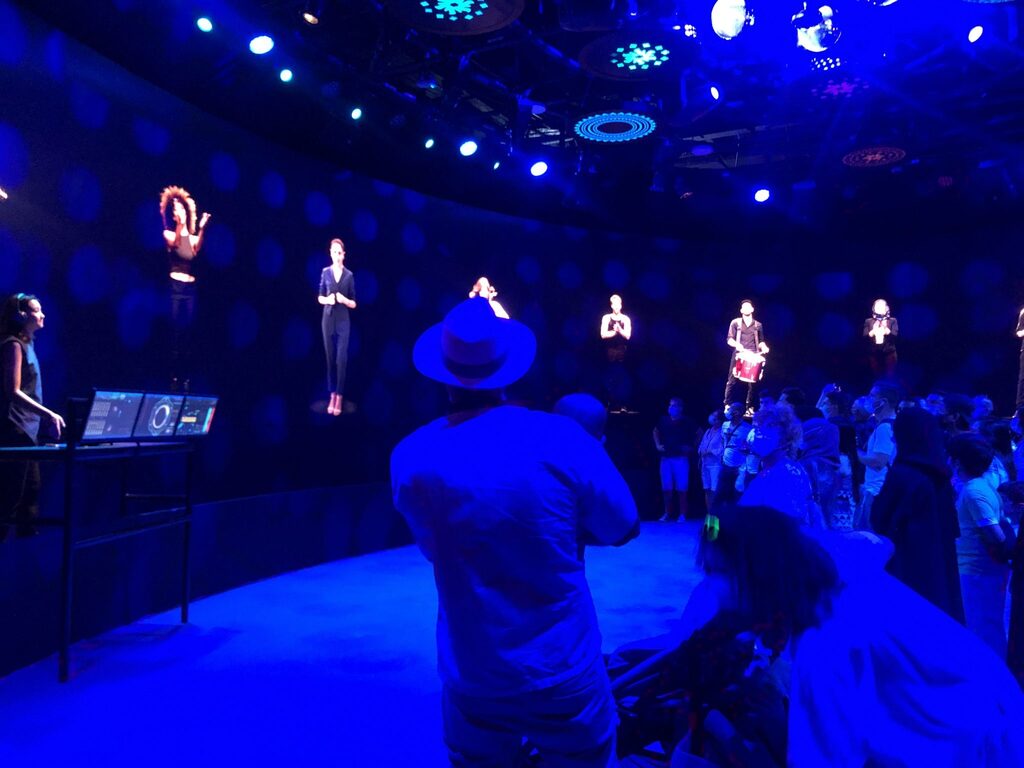

Presenter Lucy Ayoub urges visitors to “follow the beat” toward a future based on values such as creativity, innovation, diversity, and environmental responsibility, at the Israeli Pavilion
(Photo: The Media Line)
Like the Palestinian pavilion, the Israeli one attracts a wide variety of visitors, but statistics are not available on how many.
Minister of Tourism Yoel Razvozov opened the pavilion. Addressing a crowd that included mainly Israelis but also Arabs from the wider region, he said, “Peace allows us to forge a new reality in the Middle East that will bring prosperity, security, and stability to all.”
The article was written by Omnia Al Desoukie and reprinted with permission from The Media Line


